-
Posts
809 -
Joined
-
Last visited
Content Type
Profiles
Forums
Blogs
Gallery
Events
Store
Posts posted by Yankee
-
-
750 is a gold mark and your Crown is extremely rare. Yes all things possible most likely a weathly fellow ordered it to his taste.
0 -
37 minutes ago, 922F said:
Hi Yankee,
Yes, sadly the phaleristic enhancer’s or forger’s art is/was widespread and has been documented in 1890’s sales/auction catalogs and probably before. Some copies may truly be replacements for original recipients' lost awards. Others seem clearly made for more or less legitimate purposes, like the Imperial Haitian Order insignia made in the 1950’s by Bertrand to illustrate Major Francis Etienne’s book, Decorations haitiennes a travers l'histoire Port-au-Prince (1954), and the French Three Golden Fleeces examples. Others….[1974] well do you really want that Berthold collar for 90,000DM?
To my knowledge Rothe never put other than their marks [if any] on their ‘collector copy’ work. This was done by 'job lotters' or individuals. Tells include Rozet & Fischmeister’s name/logo engraved on Iron Crown reverse banderolls [aka lappets or infulae], something never seen on original R & F work which have the names in relief or raised letters. Other give-aways include bungled letter, trapezoid & and star punches suggesting Meyer origin on Leopold or Maria Theresa badge ribbon loops.
However, Rothe certainly made copies of their work well into the 1960’s and early '70's at least. Even as late as the late '80's they did special commission work, mainly on A-H orders but also Mexican Eagle badges, a couple of Italian States Orders and Bavarian Crown stars among others. These were on display for sale in vitrines to the right of the shop entry door and in counter cases along with genuine items. One could specify bronze-gilt or silver-gilt varities--not sure about gold.
While the metal stamping work of those is often hard to differentiate from original work, the enamel work and enamel detail fall short of originals. The very heavy crosshatching on Bavarian Crown star centers is a give-away for example…and whether Rothe ever was an official supplier of that order insignia remains an open topic.
Again to my understanding, Rothe did make 'replacement' and collector pieces through the '20's-'50's. Maybe up to the early ‘60’s they might have put A-H or Austrian tax release stamps on these but they seem to have stopped applying tax stamps around that time.
Someone one this forum mentioned that Rothe dies were sold –2007-14? Possibly those now enjoy reuse?
Hi 922F
i appreciate you explaining to me in detail the role of individuals who perform doing job lots. So basically there just as complicit as the manufacturers themselves. These are the ones who are putting the finishing touches in securing there sales to unsuspecting collectors. I never knew about the banderolls behind the Crown being possibly compromised. That is an excellent point you bring out if there raised or not. I feel too many plow right into the hobby without enough information and indirectly support or fuel the production of fakes. I find it strange why the European Governments didn’t put them behind bars or punish them with stiff fines. I read an article on the CWRS that two or maybe more British citizens had a machine created to having medals impressed just like the originals not even the experts could tell them apart. They went to jail and luckily for collectors of British they were caught early in their scam. Nice the Rothe dies are floating somewhere. So let us hope they are being utilized as paper weights.....or fell into the hands of a good person who wants them secured.
0 -
On 18/01/2019 at 12:41, 922F said:
Paul's droll comments always welcome and usually on TARGET!!
Laurentius, In my experience, the Rothe firm exclusively made and sold copies that bear their stamps and/or characteristic details themselves. "Job-lotters" could & did buy 10 to 25 exemplars of the same insignia at a discount and then trickle those onto the collector market. These might be somewhat altered by having a different producer’s name or marks [definitely including V. Mayer’s Söhne and Rozet & Fischmeister] engraved or stamped into them, notably Iron Crown and Maria Theresa badges. I do not know whether Ernst secured 'loans' of Rothe dies but would tend to doubt it.
Some items credited to him appear to be mules, meaning assembled from either spare parts [of Godet & a few believed Hemmerle and Souval origin, at least] or spare parts married with newly made elements sometimes created from original dies. Outright completely new fabrications attributed to Ernst include Saxon Sidonia, Bavarian Saint Hubert & Maximilian [solid, not hollow, 14k gold] and other insignia supposedly made in Spain, Thailand or elsewhere in Southeast Asia. At one time specialists claimed that he provided the glut of high Thai Orders [Nine Gems, Chula Chom Klao] on the market & indistinguishable from awarded sets in the late 1970’s-early’80’s plus fake first type Thai Orders.
Hi 922F
That is fascinating that your term job lots ( job lotters)would be applicable to our hobby. As you explain it makes total sence for the manufacturer of fakes. I just didn’t realize our hobby was that big, but as you wisely stated having the forgers only release a few so not to flood the market. I didn’t know about Frankenstein parts being put together on such a large scale. What is worse is the taking of a genuine star such as a Black Eagle or Red Eagle which is than destroyed by putting a fraudulent belt around it. I never knew that Rothe would put a different jewelers name to their work. Luckily the other jewelers had their own variations but only a seasoned A-H collector would be able to sort it out. These days I see many A-H pieces stamped CF ROTHE as being placed to the time of the Monarchy when clearly they are not. I don’t think these were intended to be fakes just replacement copies in the post war. I don’t even know if the quality is the same as a war or pre war issue...Thanks
0 -
Hi Graf
Yes that is exactly what I meant. It seems the one being offered at auction has the swds a bit more raised over cross then the one you provided. Perhaps they are silver plate so I doubt they are of high quality. I don't know the difference or if anybody knows the difference of a 6th class from Alexander's time to the early years of Prince Ferdinand. Pictured is a 6th class of a solid silver example that was probably a private purchase. Unless all the early ones were made of solid silver with the bulbous arms. This one is a two part construction, most likely for the 1877 War. It looks identical to your gilded one however the swds on reverse I think were detailed. Thanks
0 -
Actually your correct there is a solid gold one with crown that I suspect was reserved for royalty. Since year 2000 have only seen once and that was at a auction in GB. I don’t think there is a solid gold one without crown or bronze as well. Take a look at the next Kuenker auction there is a bunch of fine Bulgarian being offered.
Good luck
Yankee
0 -
Fantastic pieces you guys have. In the next Kuenker auction there is a nice collection of Saint Alexander from different periods. There is a 6th class swds above the cross with only 10 being awarded
 Have only seen one other from that period and that was over a decade ago. No idea if they make copies in that grade.
0
Have only seen one other from that period and that was over a decade ago. No idea if they make copies in that grade.
0 -
Nevermind it was it was in the ANS
 0
0 -
On 16/10/2015 at 05:22, paul wood said:
Thanks Lambert, I did see an Austrian made Knight's badge which was 34mm wide, probably made to fit in with the recipient's other orders. But yes you are correct that Brazilian made pieces appear to be made to the same size specification.
Paul
Hi Paul
The Austrian made Rose have hallmarks or some other indication that led you to put the manufacture as A-H? The reason asking is recently acquired such an example having 34mm of high quality and assumed French origin. Have you access to that foto still? It never occurred to me that I could have a Rothe or Mayer made one. Thanks
Brian
0 -
Hi Igor
Thank you for bringing the battle of Shipka to my attention, fascinating to know that the Russian authorities gave all who participated a silver medal I suppose for having achieved a tremendous victory. Appreciate showing those fine early bars that also belong to the heroes of Shipka. Came across this fine early group from the same time period as the Bulgarian bars. Interesting to note that their medal placements were connected to a clip on the reverse. One does not come across early Romanian groups often so can't say if this was a common practice.
0 -
8 hours ago, Graf said:
Hi Yankee,
Yes, The possibilities are open to discuss. Only that person on his close relatives could have the answer
We only can try to make our best guess
I only based my answer because if he was promoted as an Officer he could have had an Officer Bravery Order as well. The Russian medal could have been given to him before the other Commemorative medals that means that if he was promoted then he will have an Officer Order for the Serbian-Bulgarian War not Soldier Cross(es)
Someone might have a better and/or different idea
Regards
Hi Graf
That is a good point you make with him, should have been given the Bravery Order before he put those commemorative medals on the bar which came at a later date. Then the info provided by Igor confirms your accurate views of him being an enlisted man. Thanks
0 -
Hi Graf
The reason I was thinking that the bar had the possibility of belonging to an officer was the award of the Russian medal in silver. Clearly he should have received the Russo/Turkish in bronze. Perhaps he was promoted to officer later & received the medal at that time. I suppose this fine group would be impossible to identify.
0 -
What would be the rank according to this brave man's bar?
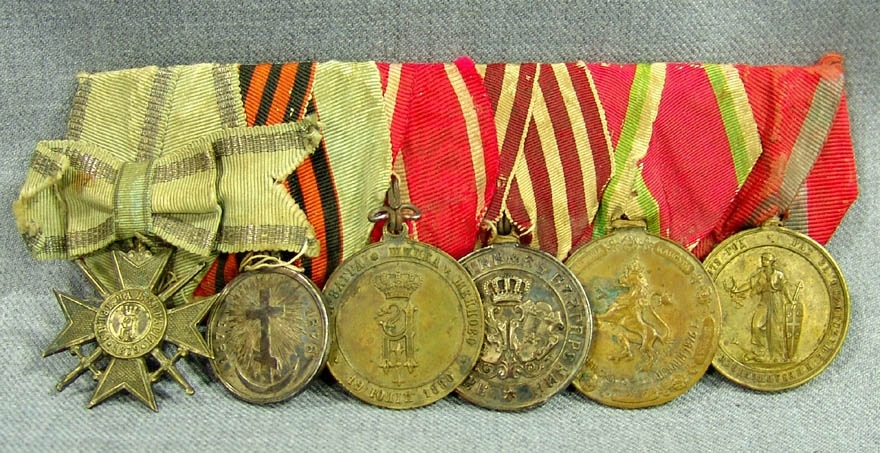 0
0 -
-
Appreciate the search Gentlemen
I suppose there can't be more than a handful in existence today. I wonder about the depiction on the reverse if that is the Tree of Life. It is wonderfully executed and a lot of thought had gone into its design. Perhaps it is similar to the Portugese Yellow Fever medal of 1858 in way of award criteria such as doctor, nurse volunteer. They were both given for humanitarian services in their respective capitals. Wonder if other Empires, Kingdoms, Duchies, Principalities had issued medals for such circumstances. If so please mention.
Thanks
Brian
0 -
9 hours ago, Igor Ostapenko said:
Yankee
 ,
,
your order from Viktor too

http://bulgarianorders.com/i-167-1908-bulgaria-royal-merit-order-yelge-rare.html
very rare early order !!!
( Can you to use best camera ?
 )
)
Hi Igor
Thanks a bunch for providing that excellent research. I suppose the vast majority were awarded in peace time of this type. So this begs the question of how many were awarded for the Balkan Wars of 1912,13 & WWl? Interesting that in the beginning most of the awards went to foreigners is mostly because Alexander brought his own officers I think. I did actually purchase that order of merit from Victor but not the one shown above.
As I recall there were 5 or 6 orders of merit all of the same signature telge being offered at once. So I just assumed being so many that they were not scarce. The one you show from vicmart is a Yelge which he describes as being scarce too. Vicmart describes the Yelge piece being early too or is he wrong? At that time remember seeing the order of merit Alexander type with wreath and one with chain but that was 10 or more years ago and I suspect long gone from his list. Did manage to pick up an Alexander type medal of merit from him.
 0
0 -
-
On 11/11/2017 at 07:00, new world said:
hi Graf,
I don't believe that was the mark from the star. What is shown - just a fragment of the pin, there is no full shot of the reverse of the star. That mark looks like it is by C.F. Rothe, Wien, which is of course Austro-Hungarian manufacturer. However, in the description this set is noted as French made:
'Sash Badge, 60 mm, gilt silver, pale blue enameled arms with finely outlined border, the medallion's outer circlet with dark blue enameled "EX ORIENTE LUX" motto and centre in the finest enamel miniature painting, red enameled fl ames superimposed by gilt fl eurs de lys, the reverse centre's outer circlet with dark blue enameled "XVIII - MAJUS MDCCCCIX" the medallion with bright red translucent enamel on chiseled ground and gilt Royal Cipher, typical suspension loop and original, light orange silk sash. Breast Star, 77 mm, silver, with chiseled and pierced rays, red enameled, gold "seraphim" centre (the face, in the best enamel miniature painting, minor chip), red enameled, gold fl ames, superimposed by fl eurs de lys, plain reverse with rivets, screws and pin. An outstandingly rare, original group of French manufacture, in extremely fine condition! IRR!'
CF Rothe was maker of official classic C&M awards.
Also, it's a bit strange mark, as two stamps appear to be swapped - 'Wien' is before 'C.F. Rothe'. On the awards I've seen it's always other way around - 'C.F. Rothe' before 'Wien'. This could indicate fake mark, as seen on some counterfeit awards.
Anything marked CFR, CF Rothe is post WWI. These pieces are nothing more than post war replacements, copies, fakes, etc but they are not from the time of the Monarchy. So so many dealers treat these marks as genuine A-H Monarchy period. I suspect many dealers just don't know and push the narrative its a Rothe so it has to be good.
0 -
I remember the Fattovich collection all too well. Never did I see so much A-H material being auctioned off from one collection. When I read the description of a good many lots being of later manufacture but of excellent quality gave me a moment to pause in being careful what to bid on. I knew right away that a lot of these fantastic copies would reappear on unsuspecting dealer lists and auction sites. I recall those fantastic gold collars being sold off dirt cheap. There is nothing to stop an expert jeweler/engraver to make official markings prior to 1918 on them. Have seen some very rare combinations myself recently not being labeled as copies. Basically a lot of collectors are going to get burnt
 As for myself I did purchase one item & I can only hope the other bidders who participated were in the auction room itself having already examined it. So basically took a chance & hope the dedication is genuine and not something of a 1960's or 70's collectors paid order.
0
As for myself I did purchase one item & I can only hope the other bidders who participated were in the auction room itself having already examined it. So basically took a chance & hope the dedication is genuine and not something of a 1960's or 70's collectors paid order.
0 -
4 hours ago, Igor Ostapenko said:
There is one without signature. The merit order right above ( left example ) looks to have no engraver.
If there is I can't see with naked eye, who is it?
0 -
6 hours ago, Igor Ostapenko said:
Hi Igor
So basically there are three types of merit order from Ferdinand period. Two with signature and one without.
Opps the little head I thought was common with TELGE signature. I have one of them just need to check engraver.
Roughly what years were they awarded from by TELGE? Thanks The ones without signature are fake
0 -
On 10/29/2017 at 10:21, Igor Ostapenko said:
Hi Igor
Is the big head type more rare? Never encountered YELOE engraver or a gold merit order. They must be very rare. Thanks for making me aware.
0 -
6 hours ago, ilieff said:
Are you sure that these are not photographs of the same medal? The ribbons look identical and this can hardly be achieved as these are hand-stitched. The photograph Igor posted is from the archives of the website, so it's older than [perhaps] 10 years - it might be your medal prior to you purchasing it.
It had never occurred to me looking at the medal posted by Igor being being the same as mine. The ribbon just faded out after all this time, and as you quite clearly point out the stitching is an exact match. I had hoped it was a different medal that Igor posted to get confirmation of the engraver. BTW just recently found your site and found it very informative and easy to navigate. Thanks for that
0 -
5 hours ago, ilieff said:
I cannot quote any figures, but certainly not that many were decorated. This is one of the rarest emissions in general, and I have only seen photographs of 5 or 6 medals (both bronze and silver) in total. We are still waiting for a 'golden' medal of this issue to be discovered (in case it existed at all).
I was wrong after removing the dust clouds from Ferdinand did discover a maker below the bust. - l NCR only those four letters were available to my loop. Any idea who the engraver is? Perhaps Igor's example just posted has same engraver.
0 -
17 minutes ago, Igor Ostapenko said:
Good idea the before and after results. I could have sworn when first purchased my example looked exactly like yours.
0





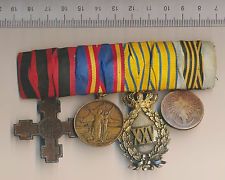

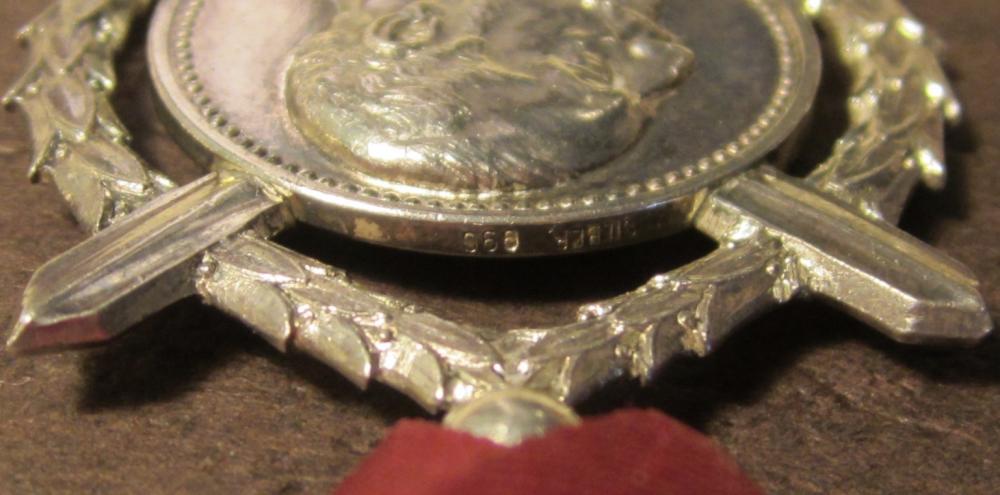
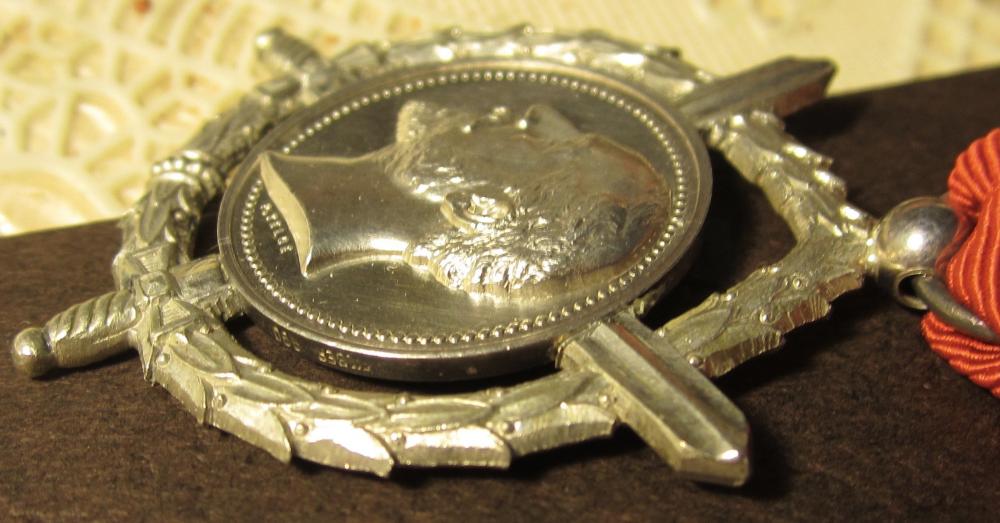
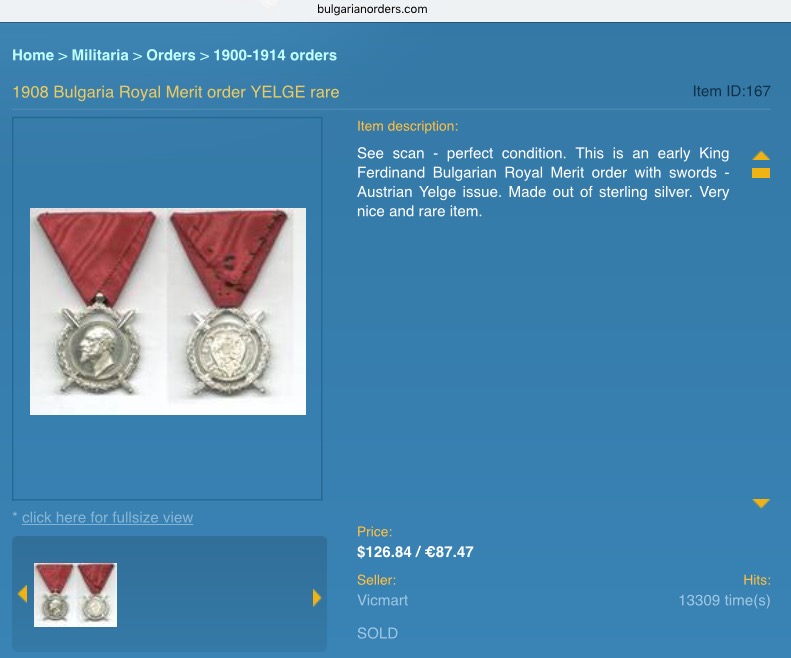

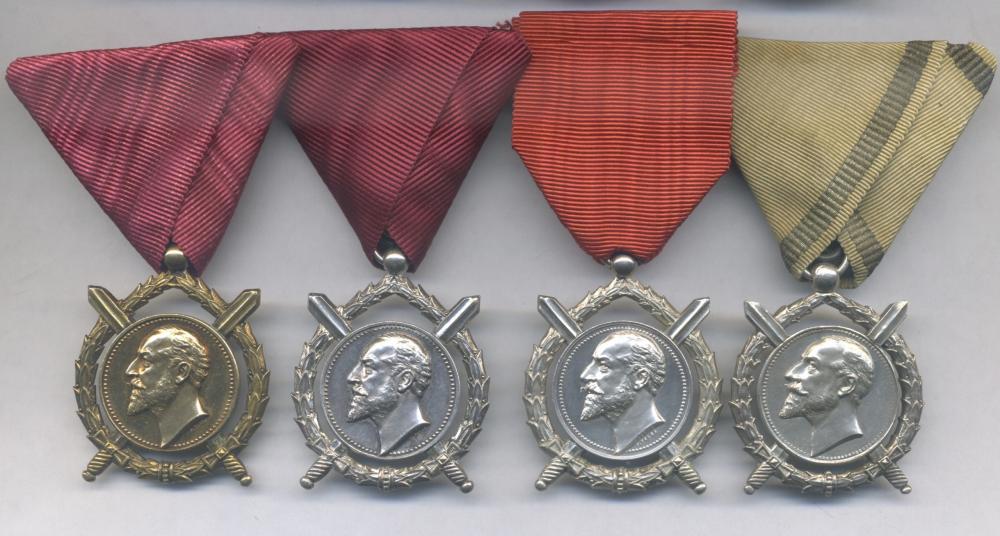
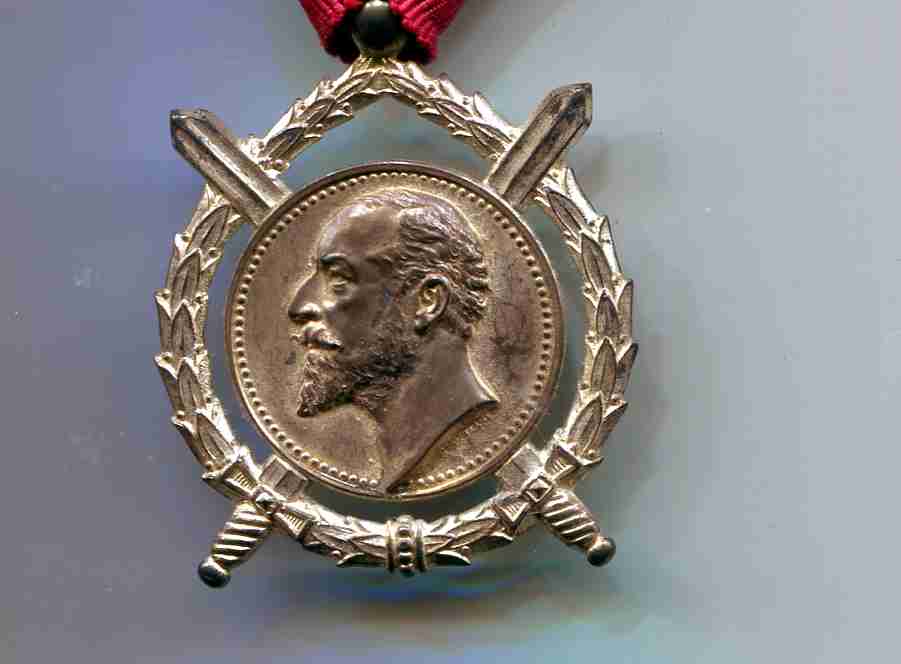

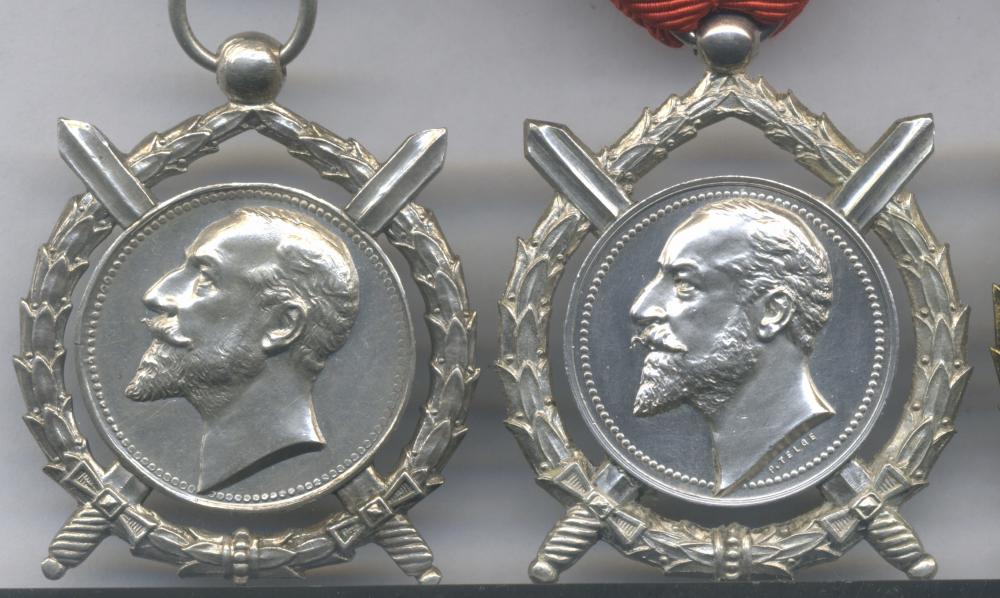
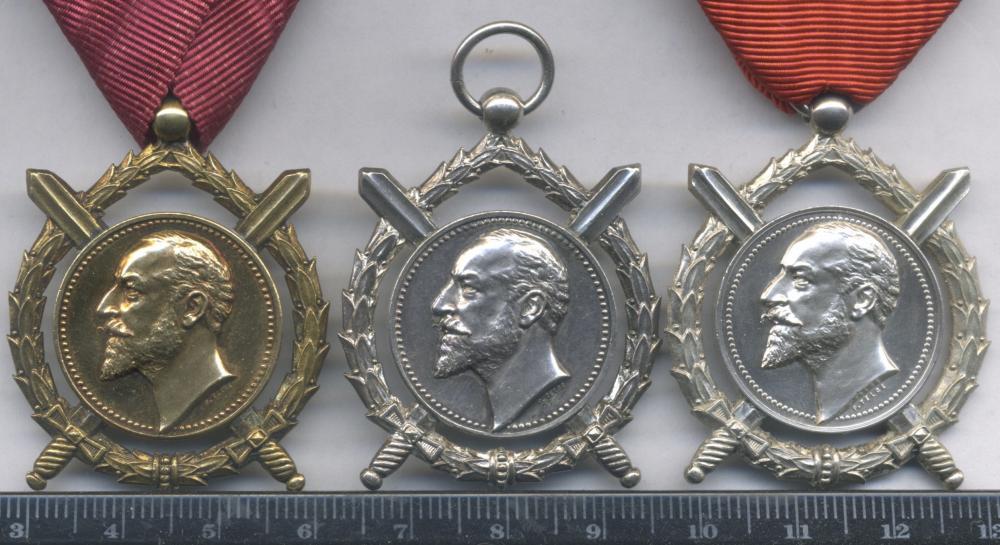
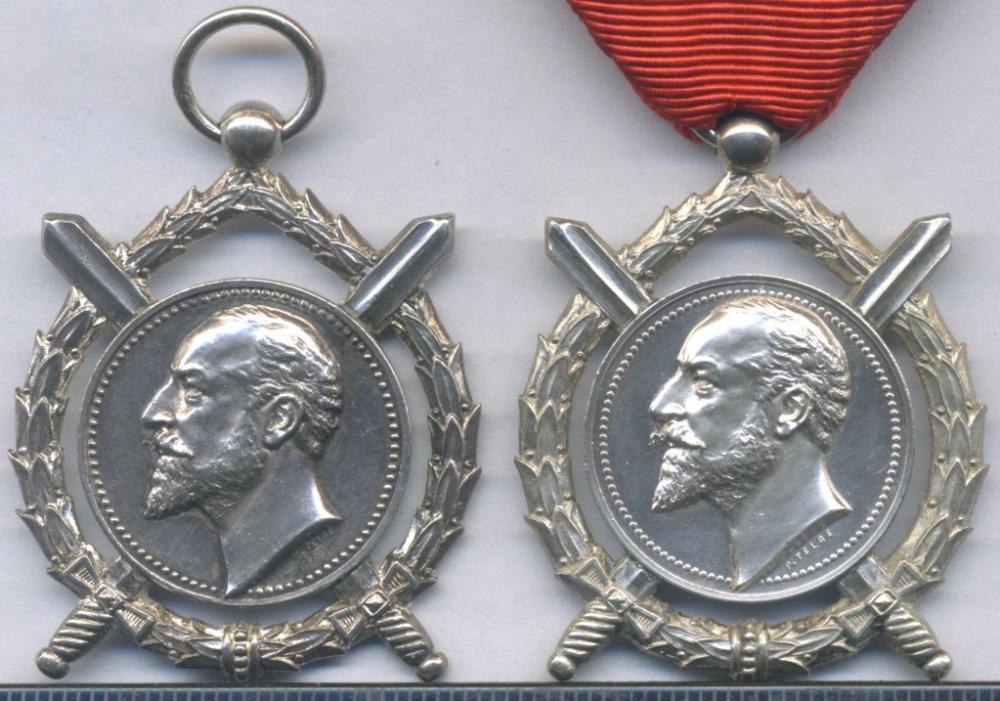
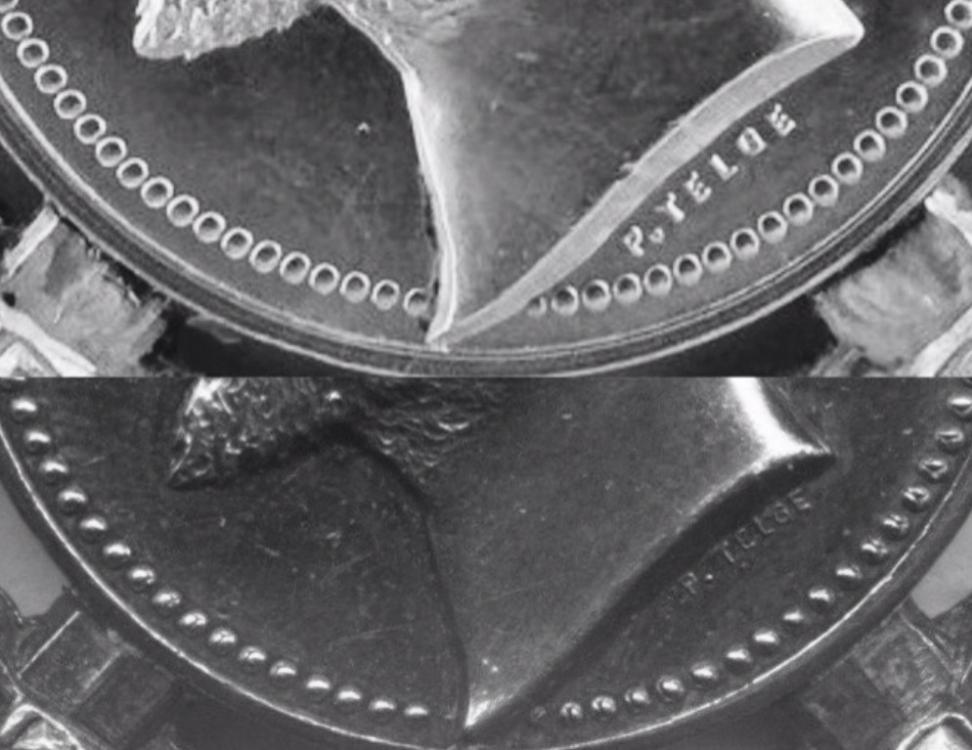
![2a3e4516_bgmermedsilprferdohook2.jpg.ffa567bd45cfc8165e89abea33de87e5[1].jpg](https://gmic.co.uk/uploads/monthly_2017_10/59f1892def7e9_2a3e4516_bgmermedsilprferdohook2.jpg.ffa567bd45cfc8165e89abea33de87e51.jpg.2e567145ec6ca455d788c89253c942ef.jpg)
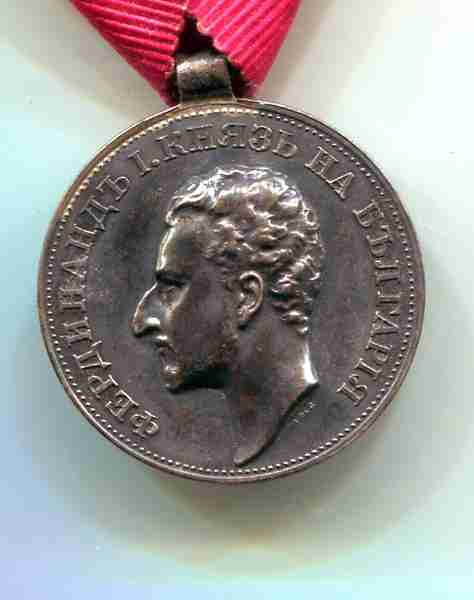
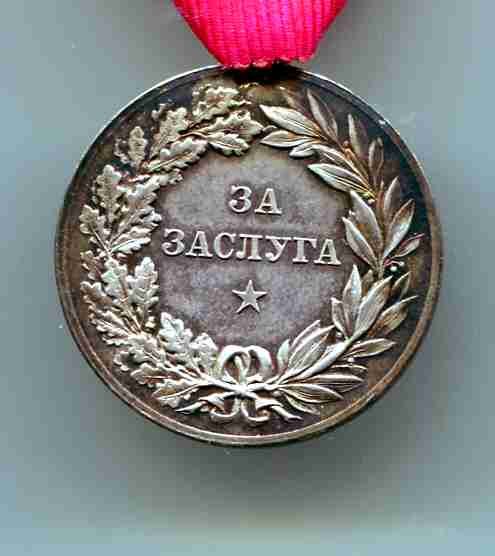

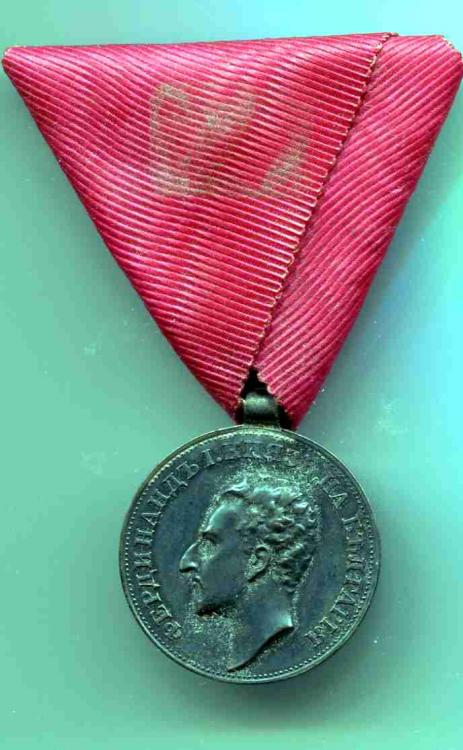
Gold Romanian Order of CRown cmdr perhaps?
in Southern European & Balkan States
Posted
Good to know, other countries in Europe participated as well with that number in silver-gilt? Usually it is common to see gold stamped 750 in Europe for us it would be 18k and 585 for lower grade. Thanks